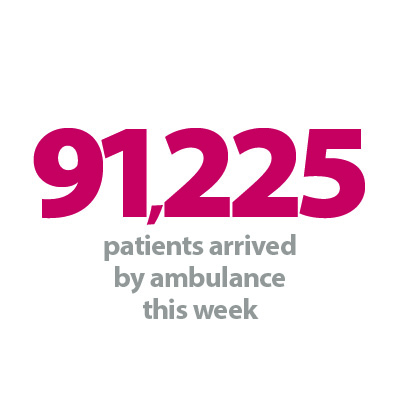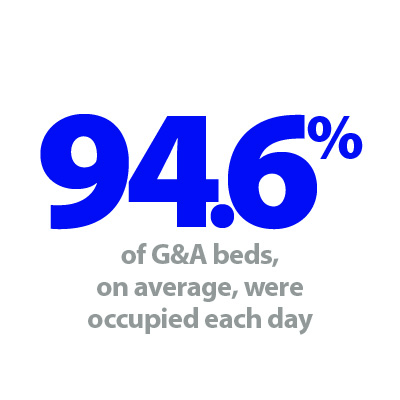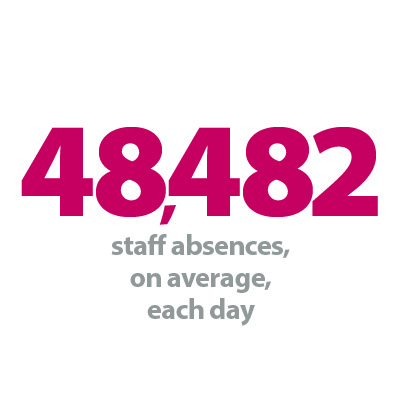


Introduction
Today NHS England published another release of its weekly winter situation reports, providing insight into the situation on the ground from 5 to 11 February.
This week's figures illustrate a healthcare system under significant pressure as seasonal illnesses continue to take their toll. The number of beds occupied by flu patients is three times greater than this time last year, and we are still seeing large numbers of beds closed due to diarrhoea and vomiting, and norovirus – together contributing to high levels of bed occupancy. General and acute bed occupancy remains above levels observed last year despite more beds being open, highlighting the challenges that winter brings for staff working in trusts.
Winter situation report (5 – 11 Feb)
A&E closures and diverts: There were no A&E closures this week. There were 22 A&E diverts this week, nine fewer than the week prior but nine more than the same week last year.
Ambulance arrivals: A total of 91,225 patients arrived by ambulance. A slight increase of 0.4% since last week and up by 17% compared to the same week last year.
Ambulance handovers: 32.6% of ambulance handovers were delayed by 30 minutes or more, up from 30.7% last week and up from 20% at the same point last year. 13.3% were delayed by 60 minutes or more. This is up from 12.1% last week and also up from 6.8% since the same week last year. A total of 27,523 hours were lost to ambulance handover delays, this is 13% higher than last week and 2.7 times greater than the same week last year.
Critical care: Adult critical care bed occupancy is at 81.4% this week; this is lower than the week before (82.2%) but higher than this time last year (78.0%).
Diarrhoea and vomiting (D&V): The number of beds closed due to D&V and norovirus has remained at a similar level this week, with an average of 689 closed per day. This is up from 687 last week but is lower than this week last year (896).
Discharges: There was an average of 24,552 patients each day who no longer met the criteria to reside, a similar number to last week (21 more). Of these, over half (56.1%, 13,766) remained in hospital, a larger proportion than the week prior (55.7%) but lower than the level seen last year (58.3%).
Flu: This week the average number of general and acute beds occupied by flu patients each day decreased slightly by 3.3% to 2,292. This is three times the number than at the same time last year (687). An average of 98 critical care beds were occupied by flu patients each day this week (8% fewer than the week before), up by 95% compared to last year (50).
General and acute (G&A) beds: There were an average of 103,557 G&A beds open each day across all acute trusts. On average each day, 84 G&A beds were unavailable and void to non-Covid admissions. Average bed occupancy remains at a similar level to last week at 94.6%, this is higher than the same time last year (93.8%).
Long stay: The number of patients staying in hospital longer than seven days has decreased slightly since last week (down by 0.2%), but those staying longer than 14 and 21 days has risen by 0.7% and 1% respectively.
Neonatal intensive care beds: For all trusts, bed occupancy has increased from last week and is at 69.6% this is up from 66.5% last week. The average number of care beds open is at 1,715, the same level as last week (1,709).
Paediatric intensive care beds: For all trusts, bed occupancy has decreased slightly this week to 77.9%, down from 78.7% last week. The average number of care beds open has risen this week by three beds to 373. The average number of care beds available has risen by four beds to 83.
Respiratory syncytial virus (RSV): An average of 18 beds were closed this week due to RSV symptoms, down from 22 last week and down from 23 last year.
Staff absences: There were an average of 48,482 total absences each day this week, of which 3% were Covid-19 related (1,513). The total number of staff absences has decreased from the week before (49,620), and the proportion of Covid-19 related absences has decreased from 4%.
Our view
This week's data demonstrate the system-wide pressures being felt across the NHS as staff work hard throughout the winter period. Patient demand continues to be significantly high and seasonal viruses remain a cause for concern.
The number of patients arriving by ambulance this week was a sixth higher than this time last year and among the highest level this winter. This increased demand has contributed to an increase in handover delays where there has been a considerable rise in total hours lost to ambulance handover delays – almost three times greater than the same week last year. Despite dipping last week, the proportion of delays by over 30- and 60-minutes have increased again and are higher than they were this time last year. However, the current levels of handover delays, albeit high, are still lower than the peak observed in December 2022.
Patient flow issues persist in and outside hospitals, as we still see extremely high levels of delayed discharges. This week almost 14,000 patients remained in hospital each day despite no longer meeting the criteria to reside – the second highest number so far this winter – exacerbating capacity in hospitals. G&A, adult critical care, and neonatal critical care occupancy have exceeded last year's levels and remain concerningly high. However, more positively, there has been a slight reduction in paediatric intensive care unit bed occupancy compared to last week, and this is lower than one year ago.
These challenges exist alongside ongoing workforce pressures. This week saw fewer staff absences compared to most weeks this winter, but trust leaders must now prepare for further strike action by junior doctors later this month.
Overall, while the sector is doing everything it can to treat patients as quickly and safely as possible, the data demonstrates the intense pressure staff are working under.